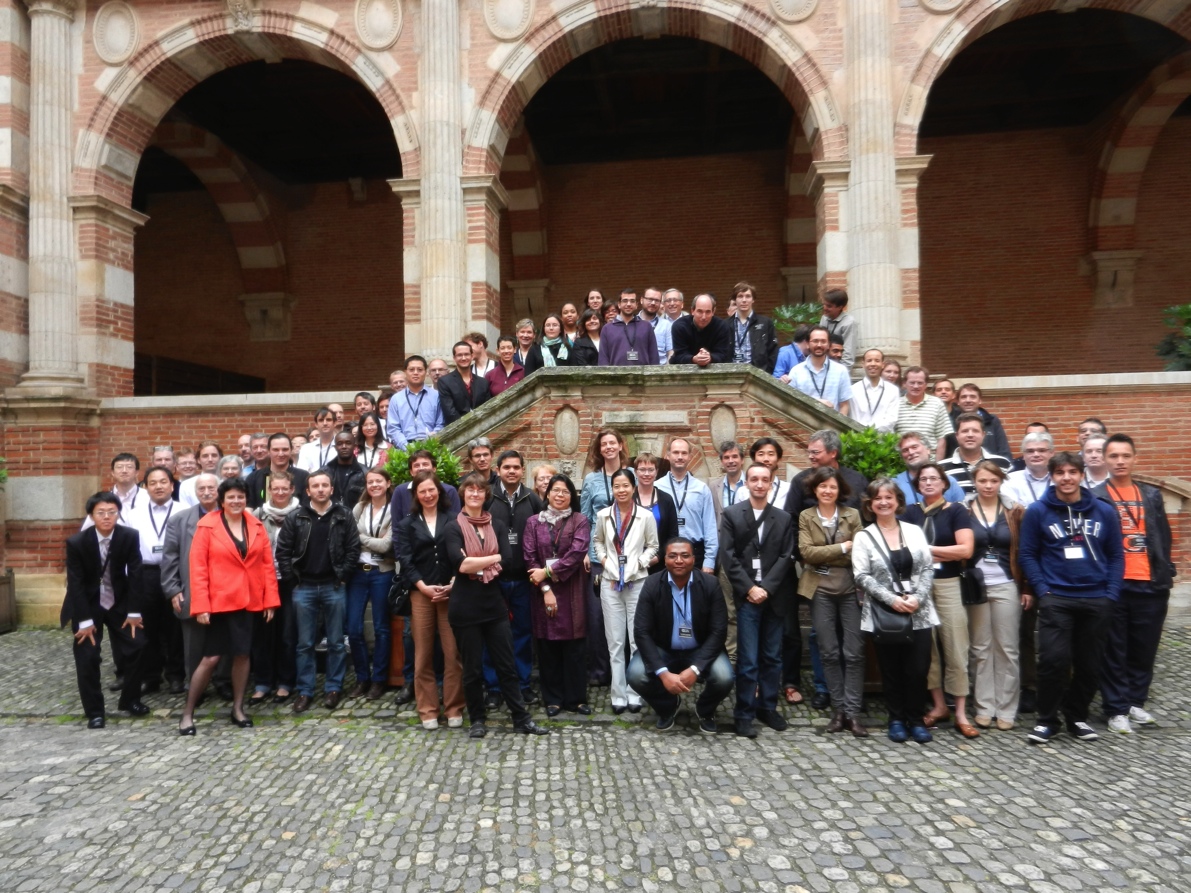GEIA 2012
![]()
15th GEIA Conference Summary
Gregory Frost1, Leonor Tarrasón2, Claire Granier1,3,4, Catherine Liousse5, & Paulette Middleton6 1 NOAA Earth System Research Laboratory & CIRES/University of Colorado, Boulder, CO, USA
2 Norwegian Institute for Air Research, Kjeller, Norway
3 University Pierre et Marie Curie, CNRS/INSU, LATMOS-IPSL, Paris, France
4 Max Planck Institute for Meteorology, Hamburg, Germany 5 Laboratoire d’Aérologie, Toulouse, France
6 Panorama Pathways, Boulder, CO, USA
Authors’ email addresses:
gregory.j.frost@noaa.gov, leonor.tarrason@nilu.no, cgranier@latmos.ipsl.fr, catherine.liousse@aero.obs-mip.fr, paulette@panoramapathways.net
The 15th Conference of the Global Emissions InitiAtive (GEIA), Emissions to Address Science and Policy Needs, took place on 11-13 June 2012 at the Conference Hôtel d’Assezat in Toulouse, France. The conference had more than 80 participants from 25 countries. The organizing committee consisted of Cathy Liousse, Paulette Middleton, Claire Granier, Leonor Tarrasón, and Greg Frost. The Conference was sponsored by IGAC, iLEAPS, CNRS, CNES, and the ACCENT-Plus, PEGASOS and MACC-2 EU projects.
The GEIA Conference demonstrated that the world’s scientific emissions community has matured from accounting for emissions to carrying out science to understand emissions. The GEIA community has also evolved, from providing input to atmospheric science to providing emissions estimates to understand air pollution and climate change and support the development of environmental policies.
The Conference’s scientific presentations highlighted current and emerging emissions research. More than 90 oral and poster presentations were organized into 5 themes:
- Evaluation and improvement of energy sector emissions
- Evaluation and improvement of traffic sector emissions
- Evaluation and improvement of fire and natural emissions
- Creating community-driven interoperable emissions databases
Impacts and implications of improved emissions estimates
The Conference’s full program and presentations are available at www.geiacenter.org.
The Conference included a Town Hall discussion of current capabilities and future priorities for emission information and communication. Small groups of Conference participants met in half- hour blocks to discuss three topics:
- Emission Information for the Assessment of Air Quality & Climate
- Emission Information for Control Measures and Planning
- Improving Community Connections for Emissions
These open discussions were guided by three questions:
• What are the main limitations in present emission information or communication
methods?
![]()
![]()
![]()
- What are the main innovation methods that can be used to overcome such limitations?
What are emerging priorities for improving emissions research or
communication/interoperability?
The Conference’s presentations and discussions identified emerging directions for emissions research and offered some recommendations for future GEIA activities:
1. Science:
There is a strong need for emissions measurements and monitoring in emerging
countries in Africa, Asia, and Latin America. Links between science and society in these regions are critical to understanding emission differences with the developed world.
- The global and regional emissions community is integrating existing emissions data sets and information, expanding its use of downscaling techniques, increasing the flexibility of inventories, and providing better inventory consistency checks.
- At the same time, the focus on emissions process understanding is evolving and new emission model developments involve improved descriptions of land use, planetary boundary layer processes, convection processes, and a more accurate description of sub-grid processes.
- Innovative methodologies are currently used to improve emissions understanding. These include integrated methods that combine multiple models with observations and make use of data assimilation and inverse modeling techniques; multispecies analysis; dynamic emission factors; new ground-based and remote-sensing optical observations; and observations based on eddy covariance flux methods.
Scientific approaches are quantifying emissions trends and changes over a variety of spatial and temporal scales.
2. Advice:
GEIA can facilitate linkages between the scientific and regulatory emission
communities.
Priority issues that deserve increased regulatory attention include: speciated
measurements of organic compounds from anthropogenic and biogenic sources;
quantification of fugitive emissions from the energy sector.
GEIA can assist regulatory agencies with scientific guidance on emissions, preferably
in coordination with other international scientific efforts. 3. Communication:
- GEIA can help increase the interoperability of emission information databases, to enable objective evaluations of inventories.
- GEIA can join with other community efforts to push for common data access.
GEIA can identify additional community tools for emission data validation and
evaluation.
GEIA can help the community develop air quality metadata descriptions to facilitate
information exchange between models, observations and emissions.
A roadmap of GEIA priorities over the next 5 years will be described in an upcoming NewDirections column in Atmospheric Environment.
The 16th GEIA Conference is planned for mid-2014 in Boulder, Colorado, USA.

15th GEIA Conference venue - Conference Hôtel d’Assezat, Toulouse, France

15th GEIA Conference participants